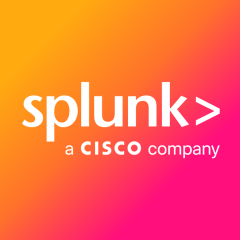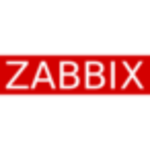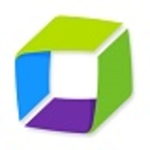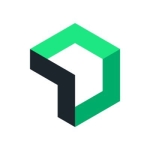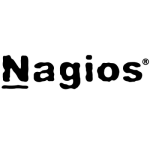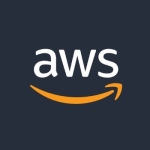What is our primary use case?
We're a bank. We do use the predictive tools for the different products of the bank and the application which the bank utilizes.
How has it helped my organization?
AppD improves the productivity of Application Engineers, development teams, and other integrated items. Slowness or leak issue is a nut for the team now. Also, the team resolves or understands the network and query path every easy and resolves efficiently.
Our application uptime, increased by 10%, and overall productivity up by 30%.
Ticket or issue down by 12% over five years of use and experience.
Open to be applied and test any area and suite.
What is most valuable?
The tracing is the most important aspect of the solution. The way it traces the information within the particular application or within the particular infrastructure is great. That actually helps. Apart from that, all of the data that's in the production APM is good.
Technical support is helpful.
The solution scales well.
The stability is good.
What needs improvement?
We do have a combination of areas that need improvement. We do have the integration, such as end-user integration and experience that could be better. It is not just from the response point of view; it is more from the error and error detection point of view. This is due to the fact that these are all the banking applications as used by the banking staff, not by the end-user directly. Based on the banking staff feedback, based on the staff security or maybe dealing with the capital market, there needs to be some improvement.
They do provide the input growth on a daily basis in terms of what is coming in and how we receive the applications and how many we have. We've now started looking for a particular product that can make sure that it should connect with files and statements inside the product.
The IO ratio, which we are looking for in terms of a report, is one of the concerns. We do monitor those details from AppDynamics, however, reporting and monitoring could be better.
There needs to be more analytics. That is what we are missing from the tool point of view. We need more information geared more towards helping us in making better decisions. When you do the coding that's for a banking situation or maybe in the incidents or capital market, it becomes very important that how much time I'm investing inside the transaction. A transaction which needs to be carried out for either confirming the payments or maybe either releasing the payments - these kinds of things. What I have seen with the use, as of now, is a bit of a lag when we are running on the global cloud or the public clouds, like Azure or the Google platform.
Right now, we are fighting between three different stakeholders. With the networks, we have a different chat, with the vendors we have a different chat, and with the application team, we have a different chat. This approach doesn't provide a holistic view. Everyone has their own excuses and everyone has their own reasoning and conditions.
If it can be able to intelligently provide all the things we need to look at, from a data point of view, that would be very useful.
For how long have I used the solution?
I would say that I have between seven and eight years of experience, hands-on. However, later on in the time frame, over the last four or five years, I have not has as much hands-on experience with the tool. I'm more involved in various solution discussions and strategy building with the platform on top of the tool.
What do I think about the stability of the solution?
I would say it's very steady and for now, it's very reliable as well. It's stable. We don't have issues with bugs or crashes.
What do I think about the scalability of the solution?
The solution is very scalable so far in any testing scenario. It performs very well and gives us the expected output which we are looking to improve.
We are using the solution for more than 600 small and big applications. We have around 78,000 people, including the back-end staff and the development team, that use the solution.
How are customer service and support?
Overall, technical support has been very good. We're very satisfied with their level of support. So far, it's been very good for the bank.
How would you rate customer service and support?
Which solution did I use previously and why did I switch?
We have used HPE BSM (now called MF APM).
Due to these factors, we switch:
1. Costly
2. Implementation complexity
3. Multiple products and Integration
4. Not end-user friendly.
How was the initial setup?
I was not involved in the initial implementation. Nowadays, the way we approach the teams, sometimes it's very easy when it's an application with a known language like Python or maybe with Ruby or a kind of Java application. In terms of gateways inside the product, sometimes it is very tough, and sometimes it is very easy to get deployed. We're not using any out-of-the-box security.
What about the implementation team?
We have used model Train for the trainers and enforced all employees with operational training.
What was our ROI?
We achieve a great number, in terms of applications user availability increase by 30%. In treading, and agents, needs a smooth performance before the market starts. AppD provide a depth to measure any performances challenges, leak issue or even a chain linked issue story.
What's my experience with pricing, setup cost, and licensing?
The pricing is a mixed bag. In some areas they are reasonably priced, however, in others, it's a bit expensive.
Which other solutions did I evaluate?
We look for ease of implementation, diagnostics information shared, and controls to the team for working.
What other advice do I have?
We're just an end-user of the product.
We're using the latest version of the solution.
The deployment model depends on the solution or the size of the product which we are using, as the banks do have private and public clouds. In public clouds, we don't have much of the production instances. It's mainly the development. The free cloud and the cloud environment are completely on a private or in-house, on-premises solution with different ecosystems.
If a proper study has been done, and the solution makes sense for the company, I would recommend the solution.
I would like to rate the solution at a seven out of ten. That consideration is mainly due to the fact that it covers a large portfolio of the product. It does have support for many other ERP tools. A lot of open customization is available and the product support team can help to customize the product. I've found this tool very useful and helpful on that.
Which deployment model are you using for this solution?
Hybrid Cloud
Disclosure: My company does not have a business relationship with this vendor other than being a customer.

